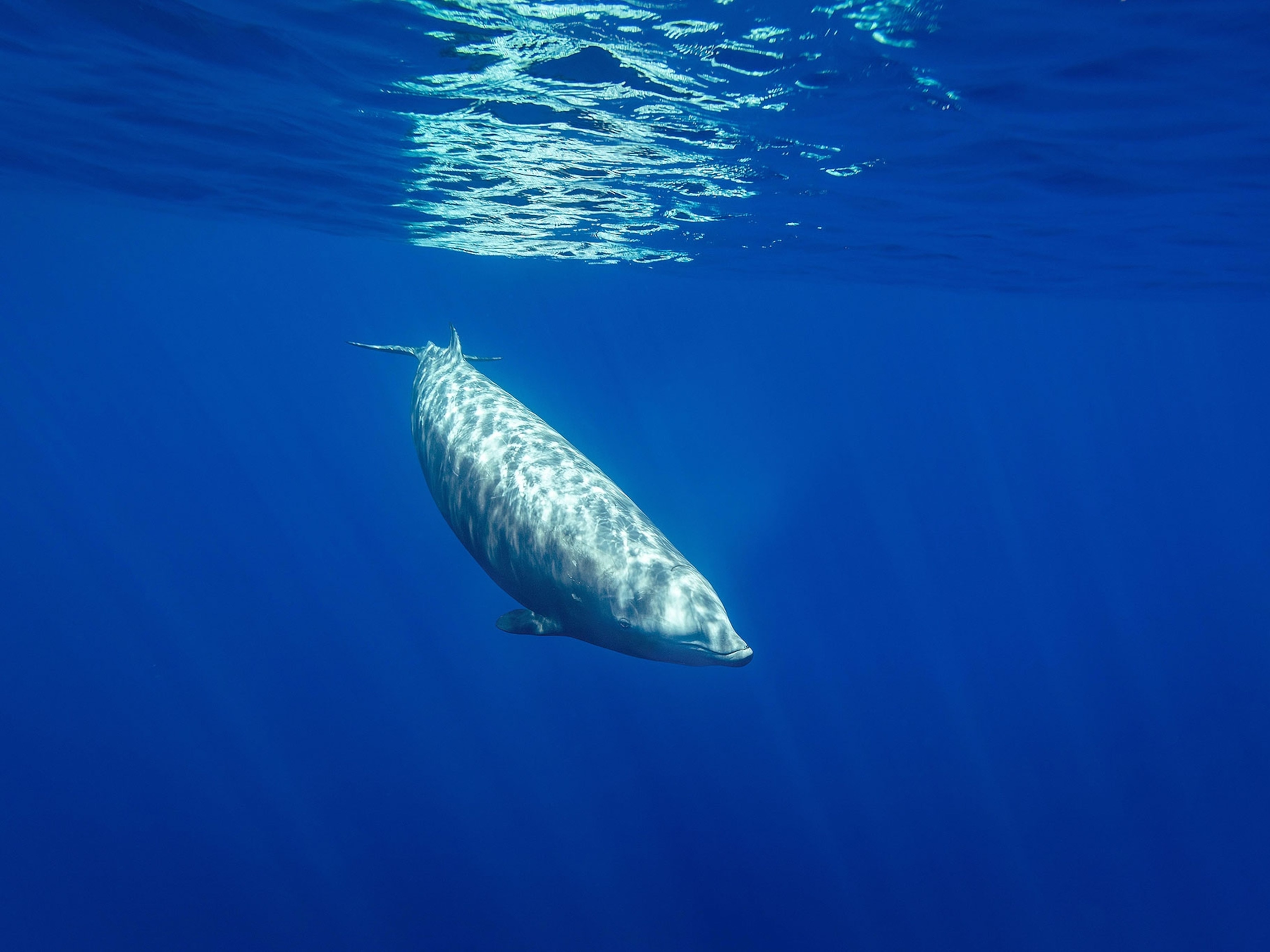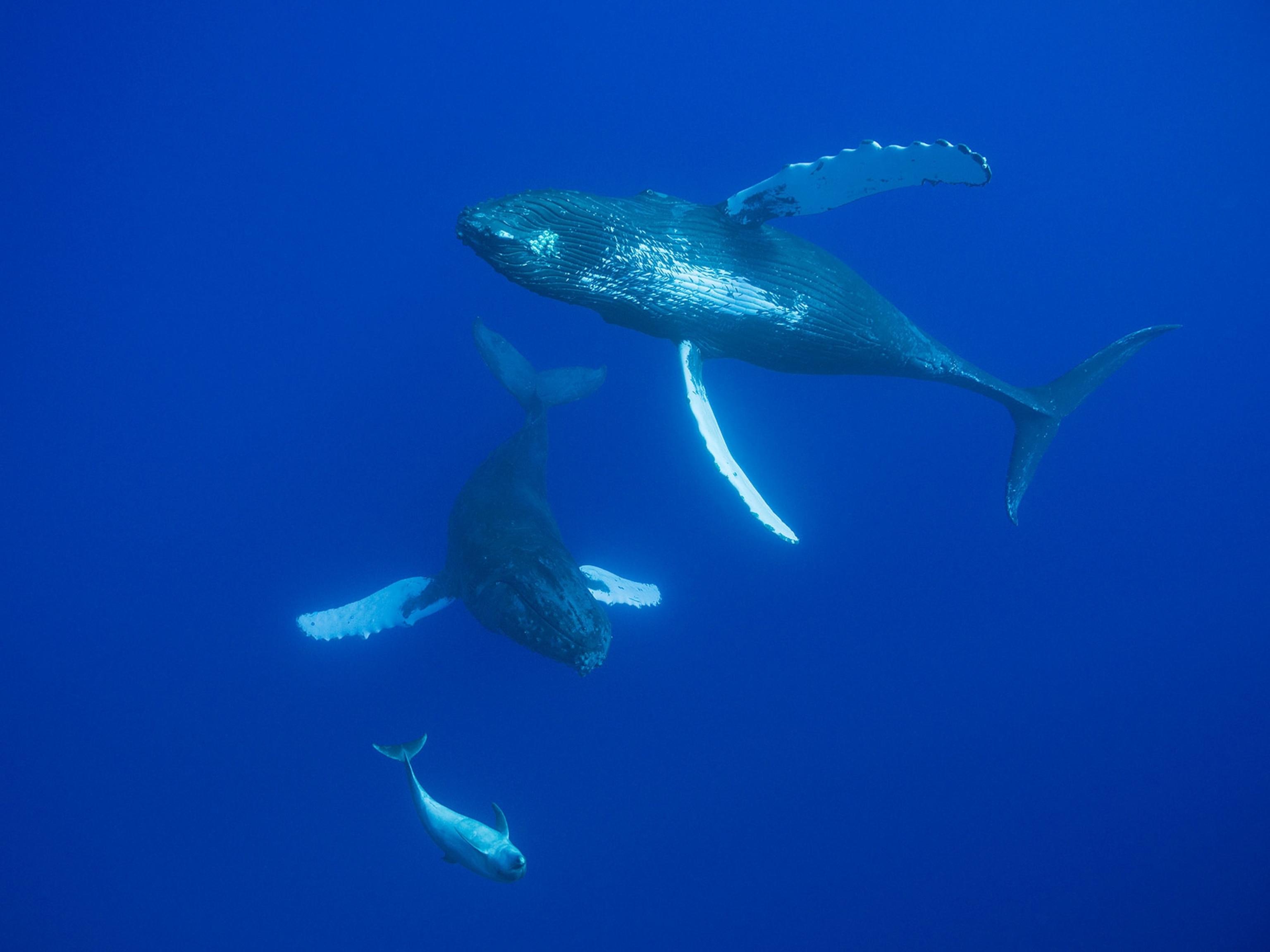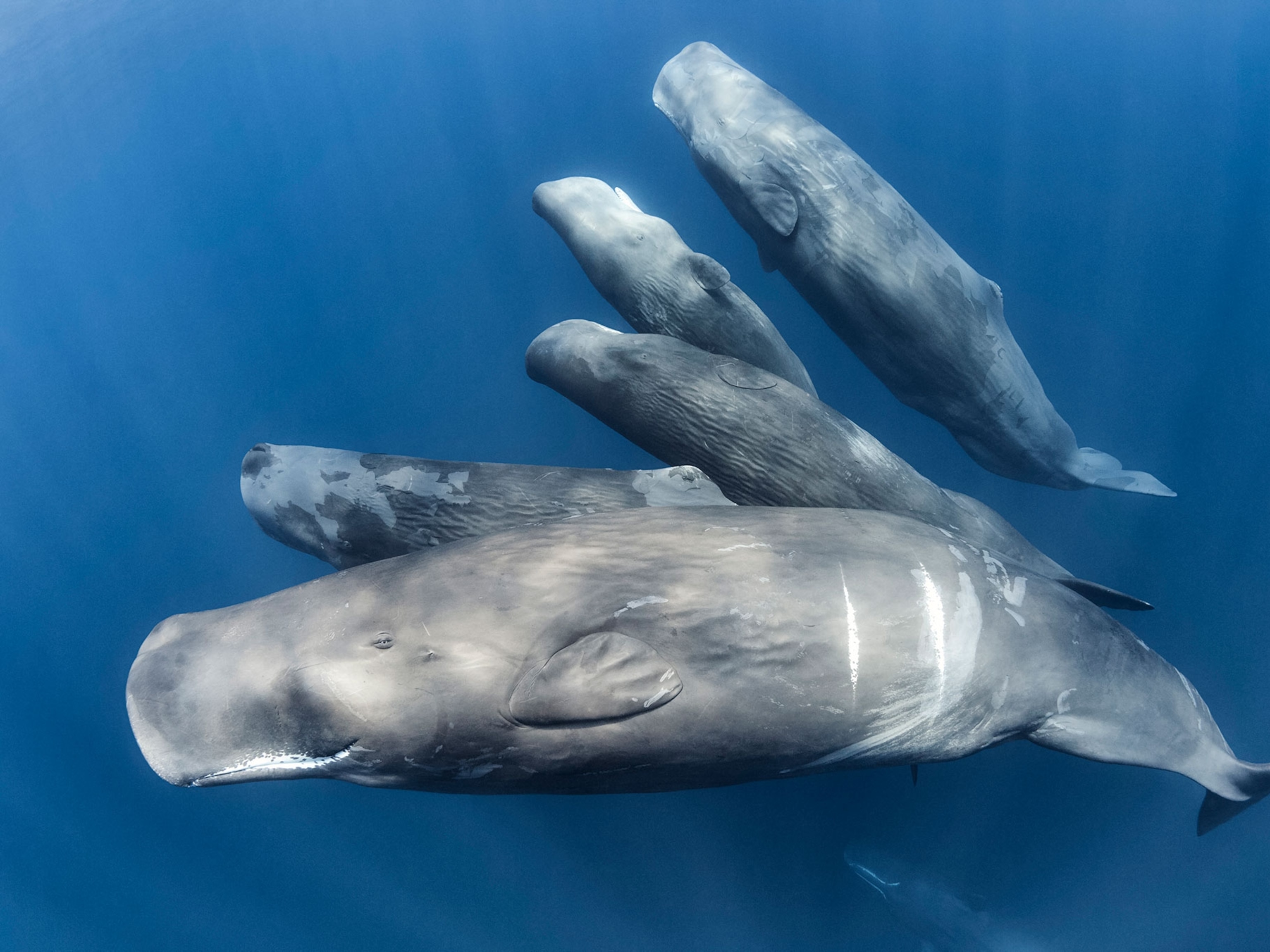
Whales Mourn Their Dead, Just Like Us
Seven species of the marine mammals have been seen clinging to the dead body of a likely friend or relative, a new study says.
Earlier this week, J35, an orca living off the coast of Washington, gave birth. But within half an hour, she watched her calf die. This is the second day she has appeared to mourn her young, pushing its dead body around in the water. More than once it has slid off her snout, and each time she’s dived to retrieve it.
"It is unbelievably sad," Brad Hanson, a wildlife biologist at the Northwest Fisheries Science Center, tells The Seattle Times. "It reflects the very strong bonds these animals have, and as a parent, you can only imagine what kinds of emotional stress these animals must be under, having these events happen."
Smart and often sociable, whales forge tight bonds with one another. More than six species of the marine mammals have been seen clinging to the body of a dead compatriot, probably a podmate or relative. The most likely explanation for the animals’ refusal to let go of the corpses: grief.
“They are mourning,” says Melissa Reggente, a biologist at the University of Milano-Bicocca in Italy and co-author of a 2016 study on the topic. “They are in pain and stressed. They know something is wrong.”
Scientists have found a growing number of species, from giraffes to chimps, that behave as if stricken with grief. Elephants, for example, return again and again to the body of a dead companion.
Such findings add to the debate about whether animals feel emotion—and, if they do, how such emotions should influence human treatment of other creatures. (See "Do Crows Hold Funerals for Their Dead?")
Animal grief can be defined as emotional distress coupled with a disruption of usual behavior, according to Barbara King, emeritus professor of anthropology at William & Mary in Williamsburg, Virginia, and author of the book How Animals Grieve.
Keeping Vigil
For the 2016 whale study, Reggente and colleagues gathered reports, mostly unpublished, of grieving behavior in seven whale species, from the huge sperm whale to the relatively petite spinner dolphin.
They found all seven species have been seen keeping company with their dead in oceans around the globe, according to the study, published recently in theJournal of Mammalogy.
“We found it is very common, and [there is] a worldwide distribution of this behavior,” Reggente says.
Scientists on a boat in the Red Sea, for example, watched an Indo-Pacific bottlenose dolphin push the badly decayed corpse of a smaller dolphin through the water.
After the researchers lassoed the dead animal and began towing it to land to bury it, the adult swam with the body, occasionally touching it, until the water became treacherously shallow. Long after the carcass had been taken away, the adult remained just offshore. (See National Geographic's beautiful whale pictures.)
It’s not clear how the two dolphins were related, but chances are they were either mother and child or close kin, Reggente says.
Such behavior, after all, has an enormous cost: A whale keeping vigil over a dead companion is a whale that isn’t eating or reinforcing its alliances with other whales.
Mourning Loved Ones
Occasionally scientists do have clues about the relationship between the mourner and the dead.
In 2010, a female killer whale known as L72 was seen off San Juan Island, Washington, bearing a dead newborn in her mouth. L72 bore signs of having recently given birth, and the researchers who spotted her knew enough time had elapsed since her last calf that she was due to have another.
“She was trying to keep the [dead] calf up at the surface the entire time, balancing it on top of her head,” says study co-author Robin Baird of Cascadia Research Collective in Olympia, Washington, who witnessed the mother’s efforts.
A killer whale mother and her offspring may spend their whole lives together, he notes. When one dies, Baird believes, “the animals go through a period where they’re experiencing the same kind of emotions you or I would when a loved one dies."
The study also found reports of whales holding dead calves in their mouths, pushing them through the water and touching them with their fins. (Also see "Pictures: Gorilla Mother 'Mourns' Dead Baby.")
Related: 10 Pictures of Whales
In one case, short-finned pilot whales in the North Atlantic Ocean made a protective circle around an adult and dead calf. In another case, a spinner dolphin in the Red Sea pushed a young animal’s body toward a boat. When the vessel’s occupants lifted the carcass on board, the entire group of dolphins nearby circled the boat and swam off.
“We cannot explain why they did this,” Reggente says.
True Grief
Anthropologist King agrees that such incidents show the whales are mourning.
“Sure, sometimes we may be seeing curiosity or exploration or nurturing behavior that just can't be ‘turned off,’” she says via email.
But “it's undeniable that we can also read something of the animals' grief in the energy they expend to carry or otherwise keep dead infants afloat, to touch the body repeatedly, to swim in a social phalanx surrounding the primary affected individual.”



















